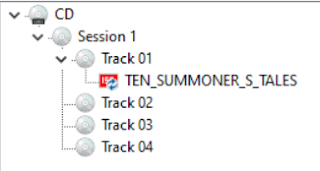Riding on the coattails of the Redbook CD-Audio, Philips continued to define and release a 'Rainbow Book' of format specifications. The end result was a barrage of complicated specs, often requiring different hardware, often employing immature compression formats which performed unimpressively. You could go down a wormhole analyzing the quirks associated with each format (and many preservationists have, including sarami's DiscImageCreator and claunia's Aaru dumping applications) - but an interesting takeaway I've found is that Philips was more interested in specifying how formats operated in their disc structure (TOC) than letting the software do the talking (DVD flavors).
The Philips CD-i video releases were either CD-i DigitalVideo format (exclusive played on the CD-i console IF you had the expensive hardware add-on) or VCD - which were packed with Philips with some kind of "CD-i" logo attached to them - "CD-i Music" or "CD-i Video".
Sting's "Ten Summoner's Tales" interestingly was released as VCD in USA and CD-i Digital Video in Europe.
European version, note "Digital Video on CD-i" on cover and "Compact Disc Interactive" on disc label:
Among the Rainbow Books is the White Book formats. I won't go deep into the White Book format dichotomy as how they relate can be dizzying even to me. The technical way to confirm the difference between the two formats is the disc structure:
- CD-i DigitalVideo has a single track.
- VCDs with the CD-i logo will have 4 tracks (later iterations of the VCD format had different number of tracks).






